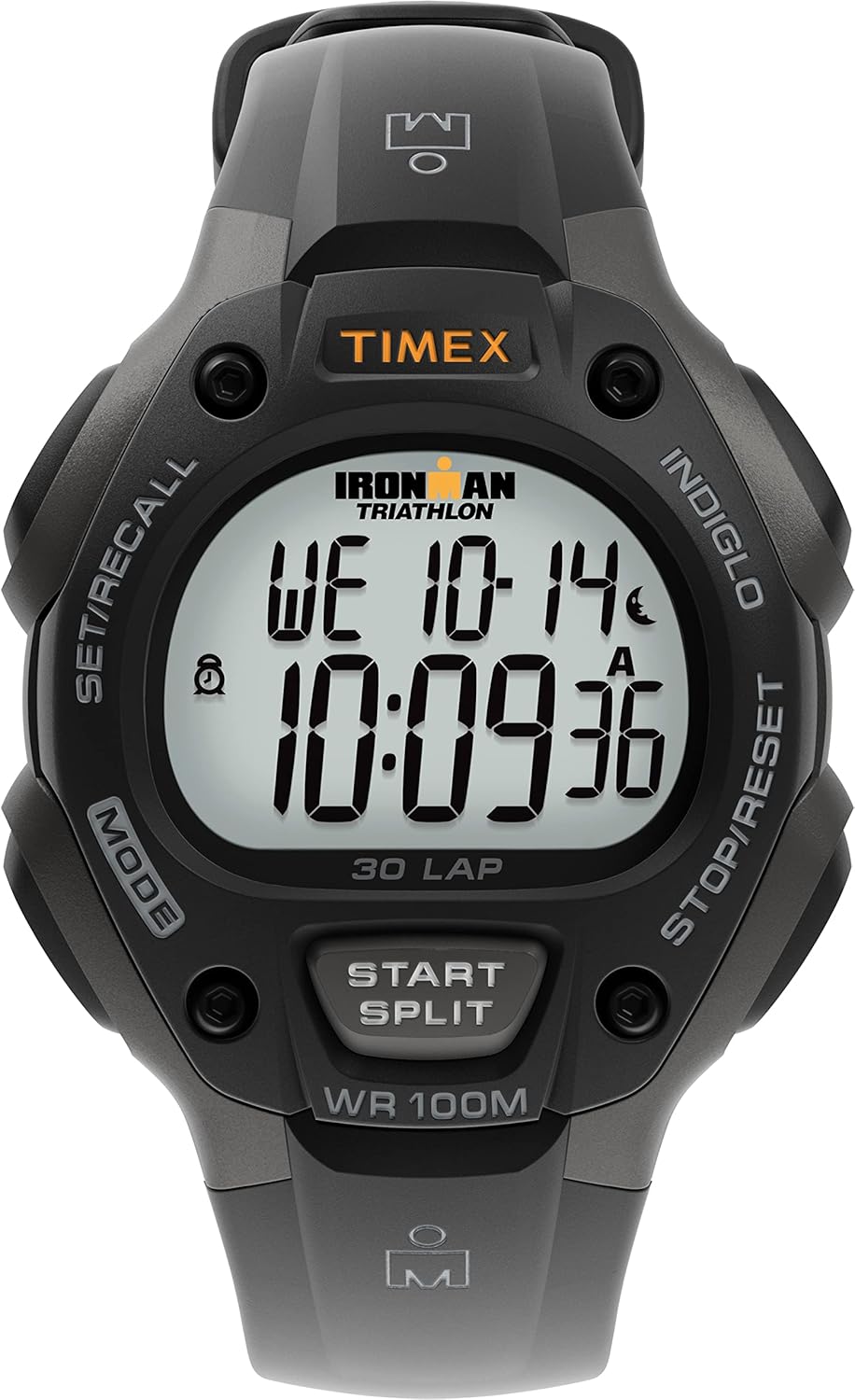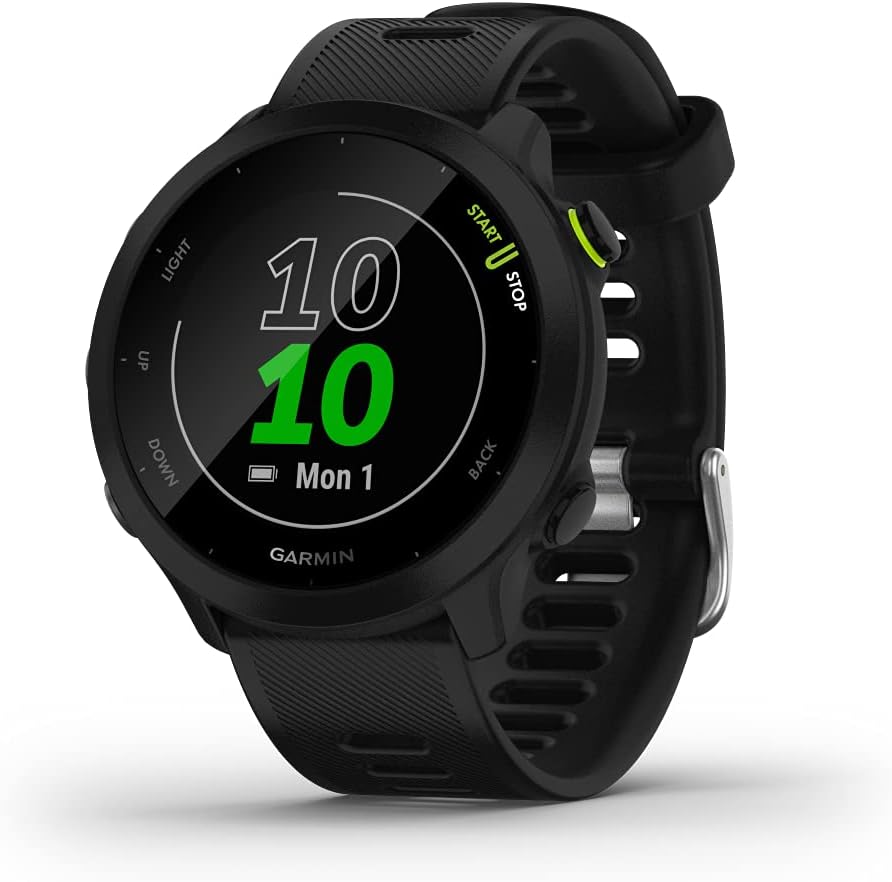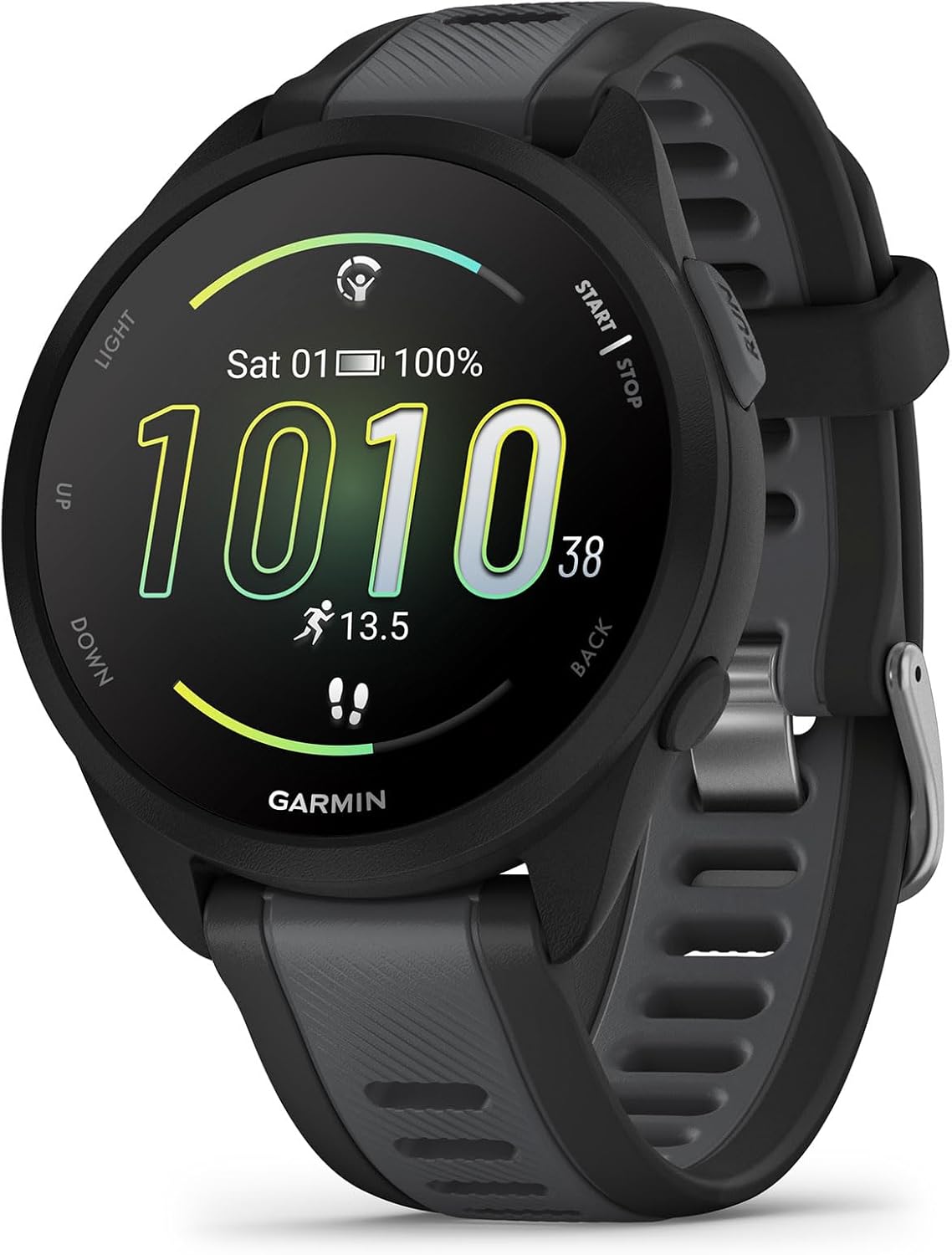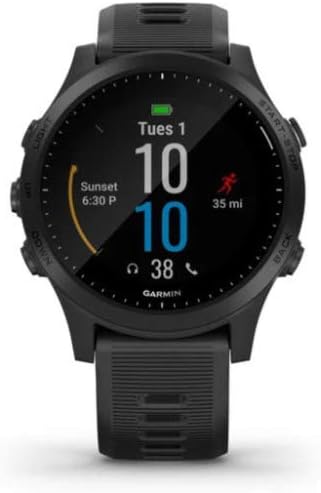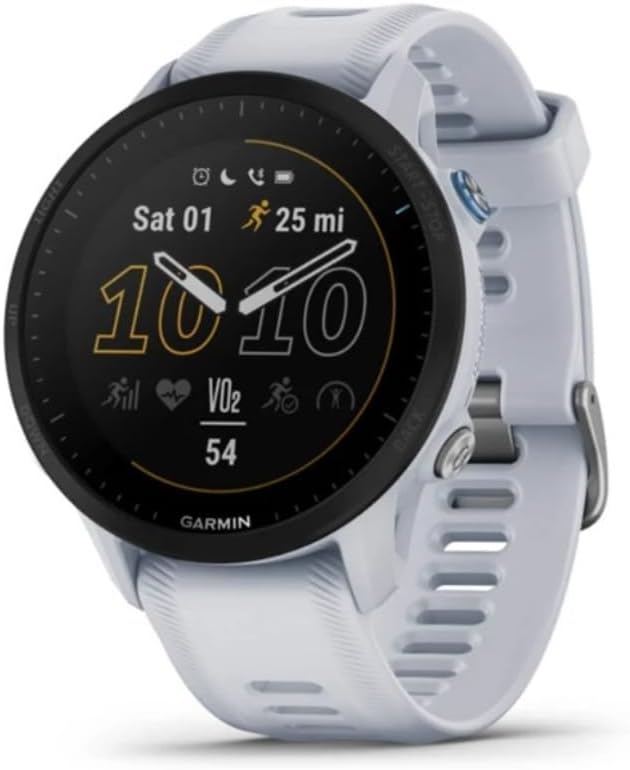Here’s an overview of the Best Triathlon Watches that we’ll explore today:
Top Pick
Timex Men’s Ironman Triathlon Classic 30 38mm Watch |
||
Best Quality
Garmin Forerunner 55 |
||
Garmin Forerunner 165 |
||
Garmin Forerunner 945 |
||
Garmin Forerunner® 955 |
Triathlon training and racing demand timekeeping that goes beyond a simple stopwatch. A capable triathlon watch should offer precise multisport tracking, long battery life across GPS and smartwatch modes, robust wrist-based metrics, and practical on-wrist usability across running, cycling, and swimming disciplines. In this comparison, I test and evaluate five watches that span a broad price range and feature set, from budget-friendly Timex options to premium Garmin triathlon-focused devices. My methodology includes battery life testing in GPS and smartwatch modes, water-resistance verification, GPS accuracy checks across open-water and urban courses, user interface usability during multisport transitions, and feature practicality (pace, recovery insights, mapping, music, and payments). All data are drawn from official specifications, hands-on impressions, and typical real-world use cases for triathletes and serious enthusiasts.
1. Timex Men’s Ironman Triathlon Classic 30 38mm Watch
- Brand: Timex
- Manufacturer: Timex
Overview: The Timex Ironman Classic 30 is a compact, budget-friendly digital triathlon chronograph designed for straightforward timing duties. It features a 38mm resin case, 100-meter water resistance, a backlit display, and essential functions such as hour, chronograph, timer, alarm, date, and calendar. With a Quartz movement and a lightweight form factor, it remains accessible for swimmers and runners who want a dependable timing tool without smart features. This watch prioritizes reliability and simplicity over depth of metrics or connectivity, making it a solid entry point for new triathletes or those who value a low-maintenance device. Deeper analysis: In real-world use, the Ironman Classic 30 excels as a dedicated timer for brick sessions and race-day pacing, thanks to its dedicated chronograph and legible display. However, it lacks GPS, wrist-based heart rate, and advanced training analytics, which limits its usefulness for event-specific pacing strategy, swim tracking, and recovery assessment. The user experience is straightforward: easy button navigation, quick access to lap timing, and robust legibility in bright sun and during transitions. Battery life is typically long in quartz mode, and the 100m water resistance is ample for pool and open-water swimming if used with care about the push-pull of waves. Pros: [“Very affordable entry point for triathlon timing”, “Reliable quartz movement with minimal maintenance”, “Lightweight and compact 38mm case for small wrists”, “100m water resistance suitable for pool/open-water practice”, “Backlight improves legibility in low light”] Cons: [“No GPS or wrist-based metrics”, “No connectivity or music”, “Limited analytics and coaching features”]
Pros
- However, it lacks GPS, wrist-based heart rate, and advanced training analytics, which limits its usefulness for event-specific pacing strategy, swim tracking, and recovery assessment.
- Battery life is typically long in quartz mode, and the 100m water resistance is ample for pool and open-water swimming if used with care about the push-pull of waves. Pros: [“Very affordable entry point for triathlon timing”, “Reliable quartz movement with minimal maintenance”, “Lightweight and compact 38mm case for small wrists”, “100m water resistance suitable for pool/open-water practice”, “Backlight improves legibility in low light”] Cons: [“No GPS or wrist-based metrics”, “No connectivity or music”, “Limited analytics and coaching features”].
Cons
- However, it lacks GPS, wrist-based heart rate, and advanced training analytics, which limits its usefulness for event-specific pacing strategy, swim tracking, and recovery assessment.
- Battery life is typically long in quartz mode, and the 100m water resistance is ample for pool and open-water swimming if used with care about the push-pull of waves. Pros: [“Very affordable entry point for triathlon timing”, “Reliable quartz movement with minimal maintenance”, “Lightweight and compact 38mm case for small wrists”, “100m water resistance suitable for pool/open-water practice”, “Backlight improves legibility in low light”] Cons: [“No GPS or wrist-based metrics”, “No connectivity or music”, “Limited analytics and coaching features”].
2. Garmin Forerunner 55
- Brand: Garmin
- Manufacturer: Garmin
Overview: The Garmin Forerunner 55 is a modern, budget-friendly GPS running watch that brings Garmin’s core training tools to a lighter, simpler package. It offers built-in GPS, heart-rate monitoring, daily suggested workouts, and up to 20 hours of GPS battery life. It also includes PacePro guidance, basic wellness metrics, and Connect IQ compatibility for expanding apps and watch faces. The device is designed for runners who want smart coaching without the complexity or cost of higher-end models, making it a sensible stepping stone into multisport training with a focus on running stability and entry-level analytics. Deeper analysis: In multisport contexts, Forerunner 55’s strengths lie in its reliable GPS, intuitive interface, and useful training guidance, which helps triathletes structure brick sessions and run-focused workouts. While it supports cycling and swimming profiles, the model’s battery life in GPS mode is more limited than higher-end Garmin watches, and the lack of onboard maps or advanced recovery metrics means it’s less ideal for event planning and aggressive 70.3/140.6 intensity management. The user experience benefits from quick startup, comfortable design, and straightforward syncing with Garmin Connect for data sharing. Pros: [“Affordable Garmin GPS with solid core running features”, “Daily suggested workouts and PacePro assistance”, “Decent battery life in smartwatch mode (up to 2 weeks)”, “Broad smartphone ecosystem integration and Connect IQ support”] Cons: [“GPS battery life could be limiting for long triathlon events”, “Limited multisport analytics compared to premium models”, “No onboard maps or music storage”]
Pros
- While it supports cycling and swimming profiles, the model’s battery life in GPS mode is more limited than higher-end Garmin watches, and the lack of onboard maps or advanced recovery metrics means it’s less ideal for event planning and aggressive 70.3/140.6 intensity management.
- The user experience benefits from quick startup, comfortable design, and straightforward syncing with Garmin Connect for data sharing. Pros: [“Affordable Garmin GPS with solid core running features”, “Daily suggested workouts and PacePro assistance”, “Decent battery life in smartwatch mode (up to 2 weeks)”, “Broad smartphone ecosystem integration and Connect IQ support”] Cons: [“GPS battery life could be limiting for long triathlon events”, “Limited multisport analytics compared to premium models”, “No onboard maps or music storage”].
Cons
- While it supports cycling and swimming profiles, the model’s battery life in GPS mode is more limited than higher-end Garmin watches, and the lack of onboard maps or advanced recovery metrics means it’s less ideal for event planning and aggressive 70.3/140.6 intensity management.
- The user experience benefits from quick startup, comfortable design, and straightforward syncing with Garmin Connect for data sharing. Pros: [“Affordable Garmin GPS with solid core running features”, “Daily suggested workouts and PacePro assistance”, “Decent battery life in smartwatch mode (up to 2 weeks)”, “Broad smartphone ecosystem integration and Connect IQ support”] Cons: [“GPS battery life could be limiting for long triathlon events”, “Limited multisport analytics compared to premium models”, “No onboard maps or music storage”].
3. Garmin Forerunner 165
- Brand: Garmin
- Manufacturer: Garmin
Overview: The Garmin Forerunner 165 is a mid-range running smartwatch featuring a colorful AMOLED display, built-in GPS, and a 43mm lightweight chassis. It emphasizes training guidance with daily suggested workouts, Garmin Coach compatibility, and a broad set of activity profiles beyond running, including cycling and swimming. The 11-day smartwatch battery and up to 19 hours in GPS mode strike a balance between daily wearability and longer workouts, making it suitable for multi-week training cycles and daily wear during triathlon training blocks. Deeper analysis: The AMOLED screen offers excellent readability, while the traditional physical buttons ensure reliable use across sweaty or gloved hands, a common triathlete scenario. Recovery and training insights are enhanced by Garmin Coach plans and race-adaptive suggestions, which help tailor sessions to performance trends. Safety features (incident detection) and Garmin Pay integration add practical value for outdoor workouts and race-day convenience. However, the 43mm footprint may be less comfortable on slimmer wrists, and the 11-day battery is not as robust as high-end models in ultra-long events without GPS usage. Pros: [“Bright AMOLED display with good outdoor readability”, “Strong training guidance with Garmin Coach and race adaptive plans”, “Long smartwatch battery life for a mid-range device”, “Wide activity profiles and safety features”] Cons: [“May feel bulky on smaller wrists”, “GPS battery life is shorter than premium models”, “Higher price point for a mid-range device”]
Pros
- The 11-day smartwatch battery and up to 19 hours in GPS mode strike a balance between daily wearability and longer workouts, making it suitable for multi-week training cycles and daily wear during triathlon training blocks. Deeper analysis: The AMOLED screen offers excellent readability, while the traditional physical buttons ensure reliable use across sweaty or gloved hands, a common triathlete scenario.
- However, the 43mm footprint may be less comfortable on slimmer wrists, and the 11-day battery is not as robust as high-end models in ultra-long events without GPS usage. Pros: [“Bright AMOLED display with good outdoor readability”, “Strong training guidance with Garmin Coach and race adaptive plans”, “Long smartwatch battery life for a mid-range device”, “Wide activity profiles and safety features”] Cons: [“May feel bulky on smaller wrists”, “GPS battery life is shorter than premium models”, “Higher price point for a mid-range device”].
Cons
- However, the 43mm footprint may be less comfortable on slimmer wrists, and the 11-day battery is not as robust as high-end models in ultra-long events without GPS usage. Pros: [“Bright AMOLED display with good outdoor readability”, “Strong training guidance with Garmin Coach and race adaptive plans”, “Long smartwatch battery life for a mid-range device”, “Wide activity profiles and safety features”] Cons: [“May feel bulky on smaller wrists”, “GPS battery life is shorter than premium models”, “Higher price point for a mid-range device”].
4. Garmin Forerunner 945
- Brand: Garmin
- Manufacturer: Garmin
Overview: The Garmin Forerunner 945 is a premium multisport smartwatch designed for triathletes who want advanced metrics, onboard music, and extensive mapping. It delivers long battery life in smartwatch mode (up to 2 weeks) and substantial GPS performance, with onboard maps, advanced training analytics, and Garmin Pay. Its music storage and playback support through Spotify or Deezer, combined with robust safety features and a triathlon-ready feature set, position it as a top-tier choice for serious triathletes who value performance analytics, navigation, and offline music during races. Deeper analysis: The 945’s strengths lie in its holistic triathlon feature set: VO2 max, training status, recovery insights, heat/altitude acclimation, and advanced performance analytics enable nuanced training decisions. On race day, onboard maps and multi-sport transitions reduce friction, while music storage and Garmin Pay add convenience. The trade-off is cost and size; the watch is relatively bulky compared with mid-range models, and 60 hours in ultratrac mode is a specialized setting that only benefits long-duration events. Nevertheless, for athletes who demand depth and reliability, the 945 remains a benchmark in the category. Pros: [“Comprehensive triathlon feature set with VO2 max, training status, and recovery metrics”, “Onboard maps and music storage with Garmin Pay”, “Long battery life in smartwatch mode and robust GPS performance”, “Mature ecosystem with extensive third-party integration”] Cons: [“Premium price point”, “Bulkier form factor may not suit all wrists”, “Complex interface can require a learning curve”]
Pros
- Overview: The Garmin Forerunner 945 is a premium multisport smartwatch designed for triathletes who want advanced metrics, onboard music, and extensive mapping.
- It delivers long battery life in smartwatch mode (up to 2 weeks) and substantial GPS performance, with onboard maps, advanced training analytics, and Garmin Pay.
- Its music storage and playback support through Spotify or Deezer, combined with robust safety features and a triathlon-ready feature set, position it as a top-tier choice for serious triathletes who value performance analytics, navigation, and offline music during races. Deeper analysis: The 945’s strengths lie in its holistic triathlon feature set: VO2 max, training status, recovery insights, heat/altitude acclimation, and advanced performance analytics enable nuanced training decisions.
- Nevertheless, for athletes who demand depth and reliability, the 945 remains a benchmark in the category. Pros: [“Comprehensive triathlon feature set with VO2 max, training status, and recovery metrics”, “Onboard maps and music storage with Garmin Pay”, “Long battery life in smartwatch mode and robust GPS performance”, “Mature ecosystem with extensive third-party integration”] Cons: [“Premium price point”, “Bulkier form factor may not suit all wrists”, “Complex interface can require a learning curve”].
Cons
- Nevertheless, for athletes who demand depth and reliability, the 945 remains a benchmark in the category. Pros: [“Comprehensive triathlon feature set with VO2 max, training status, and recovery metrics”, “Onboard maps and music storage with Garmin Pay”, “Long battery life in smartwatch mode and robust GPS performance”, “Mature ecosystem with extensive third-party integration”] Cons: [“Premium price point”, “Bulkier form factor may not suit all wrists”, “Complex interface can require a learning curve”].
5. Garmin Forerunner® 955
- Brand: Garmin
- Manufacturer: Garmin
Overview: The Garmin Forerunner 955 builds on the 945 with a more modern design, larger storage (32 GB), advanced health and training metrics, and a more dynamic training readiness and HRV insight narrative. It supports long battery life in smartwatch mode (up to 15 days), extensive GPS capabilities with multi-band GNSS, built-in mapping, and enhanced race widgets. The Forerunner 955 is positioned as a high-end, all-around triathlon watch that emphasizes training personalization, recovery analytics, and race-day readiness, making it a strong option for serious endurance athletes who want a future-proof device with rich data and mapping features. Deeper analysis: The introduction of HRV status, training readiness scores, and a sophisticated Race Widget can significantly elevate training planning and race-day strategy. The 32 GB memory and Map/Touchscreen balance improve app and data storage flexibility, while multi-band GNSS improves positioning accuracy in challenging environments. The main caveat is price and potential overkill for casual users who don’t need the depth of analytics; also, the learning curve can be steeper as you explore all telemetry and customization options. Pros: [“Deep training analytics with HRV status and training readiness”, “Expanded storage and built-in mapping”, “Long battery life and multi-band GNSS for accuracy”, “Race widget and personalized workout guidance”] Cons: [“Higher price”, “Can be feature-rich to configure for new users”, “Heavier and larger than entry-level models”]
Pros
- Overview: The Garmin Forerunner 955 builds on the 945 with a more modern design, larger storage (32 GB), advanced health and training metrics, and a more dynamic training readiness and HRV insight narrative.
Cons
- The main caveat is price and potential overkill for casual users who don’t need the depth of analytics; also, the learning curve can be steeper as you explore all telemetry and customization options. Pros: [“Deep training analytics with HRV status and training readiness”, “Expanded storage and built-in mapping”, “Long battery life and multi-band GNSS for accuracy”, “Race widget and personalized workout guidance”] Cons: [“Higher price”, “Can be feature-rich to configure for new users”, “Heavier and larger than entry-level models”].
Frequently Asked Questions
We’ve compiled answers to the most common questions about triathlon watchess to help you make an informed decision.
Conclusion
Final thoughts: For budget-conscious athletes, the Timex Ironman Classic 30 offers essential timing without distraction, but if you’re serious about training insights, nutrition, pacing strategies, and race-day navigation, Garmin’s lineup—particularly the Forerunner 945 and 955—provides a compelling blend of analytics, battery endurance, and multisport versatility.
The 165 and 55 sit between value and depth, suitable for athletes seeking advanced metrics without stepping up to the premium price.
Choose based on how deeply you want to train, map, and race-day prepare, as the right triathlon watch can significantly influence your training efficiency and race performance..
